The Burlington Free Press republished an article on William Miller from the Bennington Banner on February 17, 1843, introducing it with a heavy dose of skepticism:
“It is the latest news from this monomaniac and his whereabouts…This gentleman arrived in this village [Bennington], and commenced a course of lectures on his favorite and celebrated theme–the Destruction of the World by Fire in A.D. 1843…during his first lecture he gave substantially the following description of the MANNER of the Second Advent: ‘A small bright spot will first appear in the east, which will gradually expand as it approaches the earth…At the sound of a trumpet (or some other signal) the bright spot having gradually illuminated the whole heavens, the righteous dead shall rise from their resting places–and the risen and living saints shall together be caught up…the wicked burned up.'”
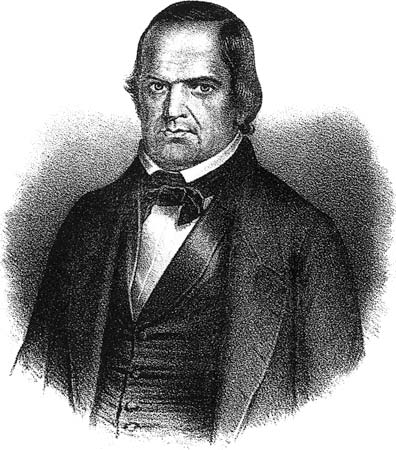
Vermont transplant, Rev. William Miller (1782-1849), was a notable Baptist preacher during the Second Great Awakening in the first half of the 19th century. Born in Pittsfield, Mass., he moved with his family shortly thereafter at the age of four to Poultney, Vt. In the 1830s he rose in prominence for his views on the impeding Second Advent of Christ (a day in Christian teachings when Christ will return again and take believers up to heaven, leaving all else on earth to burn) nationwide after partnering with Joshua V. Himes, a well-known Boston Baptist minister. Pamphlets, periodicals, speeches, and newspapers largely assisted in the spread of his radical views.
By 1843, Miller had amassed a large following, including a strong Vermont contingent (he estimated himself an impressive 50,000-100,000 followers throughout the country).
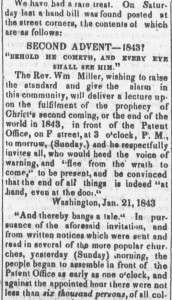
His popularity was high (drawing both the curious, skeptical, and the faithful), and on at least one occasion this was taken advantage of–near 6,000 people allegedly stood at the steps of the Patent Office in D.C. in hopes of hearing William Miller speak. After the hour of his speech had passed, and he had not arrived, it was realized it had been elaborate hoax by a Mr. James A. Beveridge (see article to the left).
A date of March 21, 1843 was predicted initially by Miller’s followers as the end of the world, while Miller himself estimated more generously the end of the world to be sometime in 1843. Miller was asked, according to one newspaper account, by a fellow as to what would happen if 1843 should come and go–to this Miller apparently replied promptly: “I shall be a poor, miserable, despised creature, and ought to be.” The prediction did indeed fall short, but rather than being ostracized, Miller’s followers were willing to give him another chance for predicting the Second Advent; extending the end of the world to potentially as late as 1844.
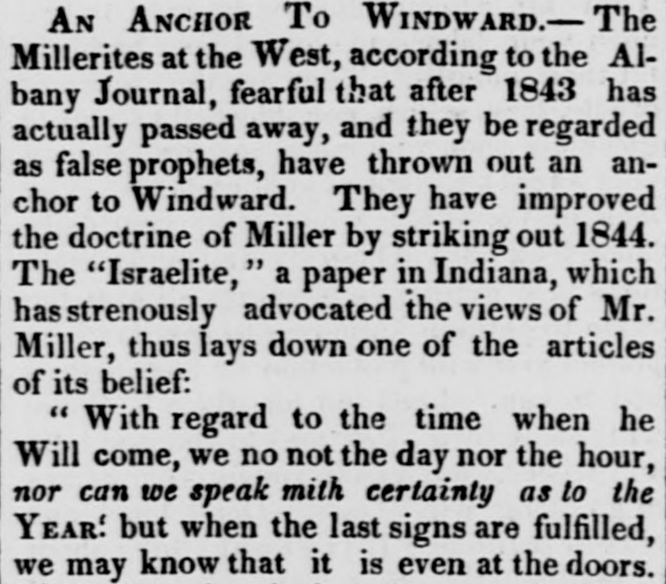
A new date, March 21, 1844, was thus established by the Millerites. While devotees prepared again for the end, oftentimes selling off all worldly possessions and property, many others expressed extreme doubt, generally in a somewhat sarcastic manner:

When the second prophesied date for the end of the world passed by, Miller gave a speech in Boston, declaring that he still had not given up on the end being near–indeed, that it was not far away:
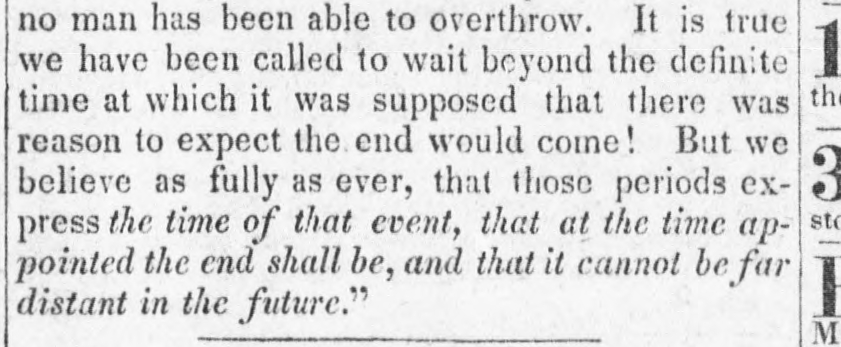
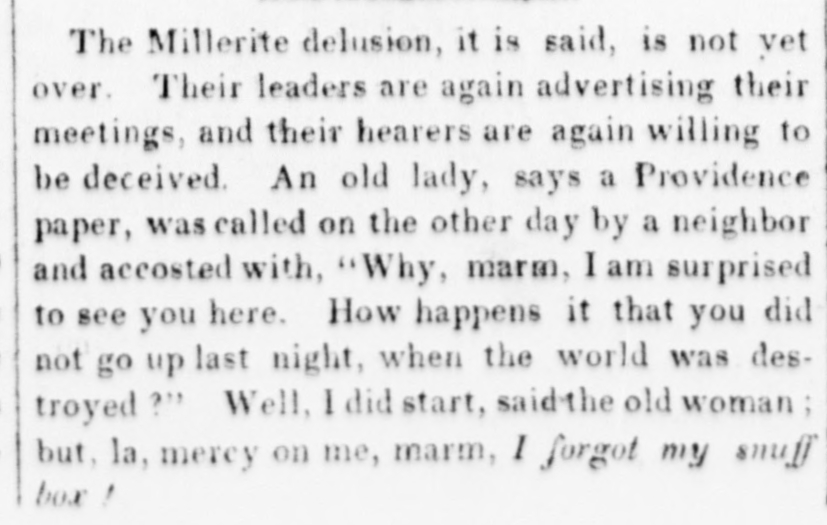
One last date of October 22, 1844, was decided upon. As we know, though, the world did not end on this date either (thankfully for us!).
Many abandoned the church after the day of October 22, which became known as the “Great Disappointment,” came and went. In the years to follow, though, stories abounded in the newspapers that there were a good number of people still clinging to the “delusion,” with numerous reports of many ending up in insane asylums or being perceived as insane. Miller, too, until his death in 1849, clung to his belief that the end of the world was nigh. Adventist believers did continue on through the creation of new churches: the Seven-day Adventists and Advent Christian Church, both active today, are descendants of the Millerites.
-K. Norwood
